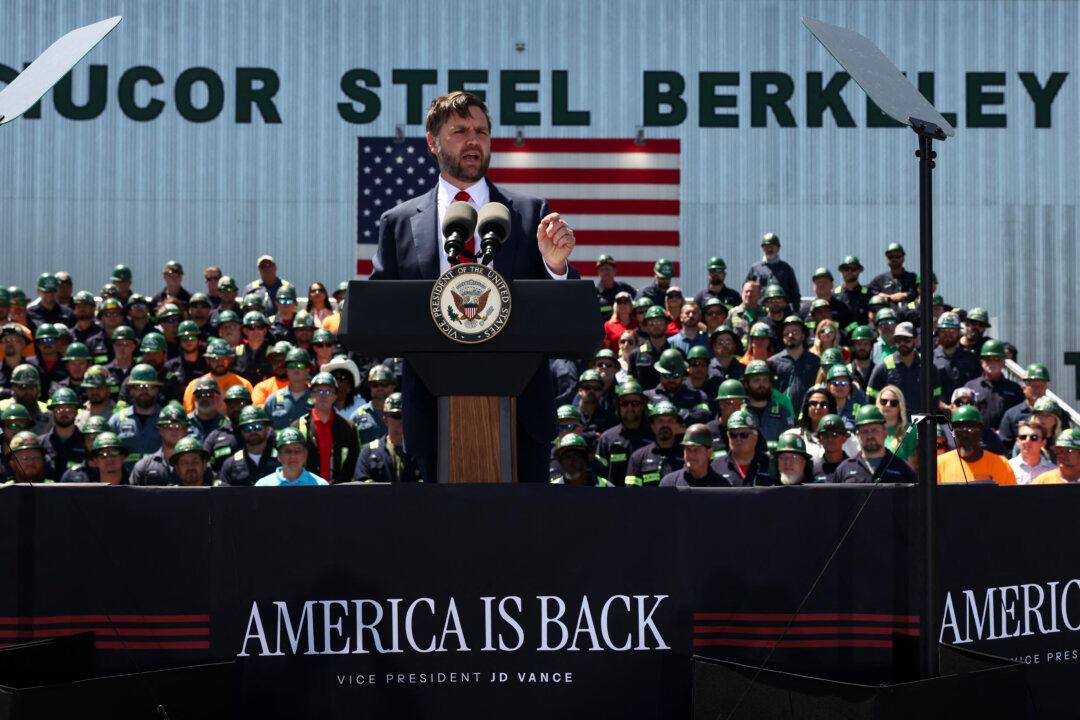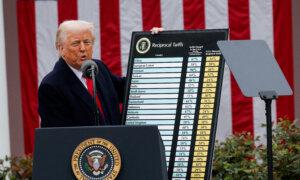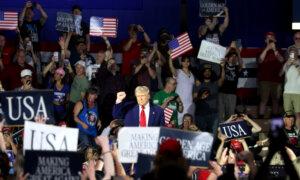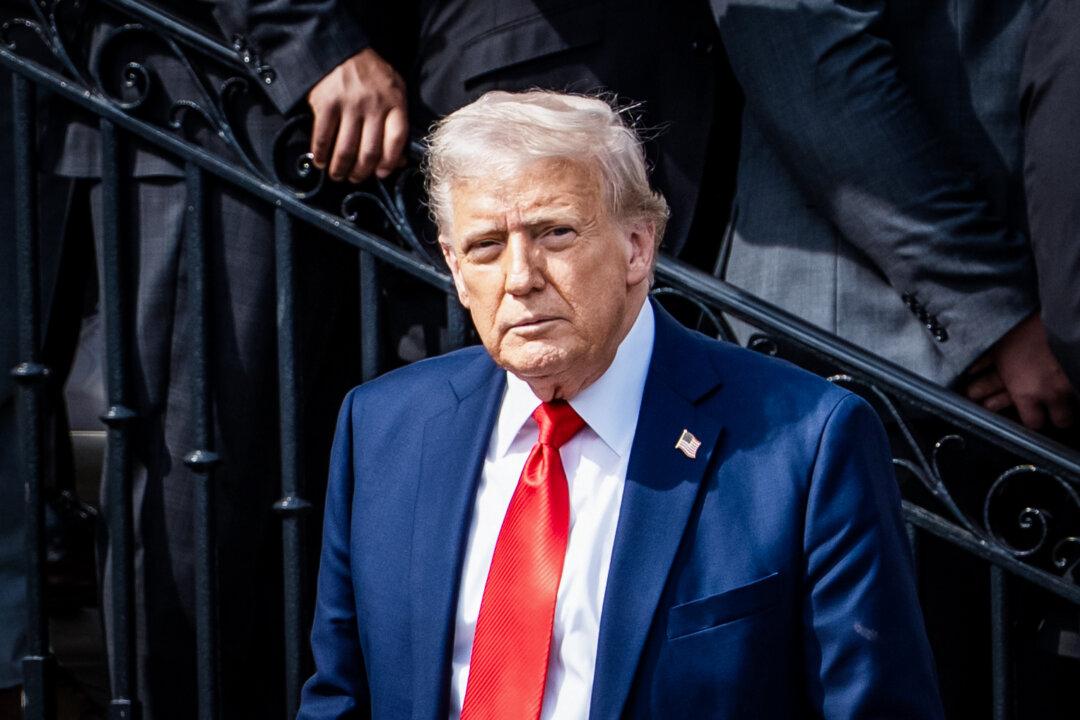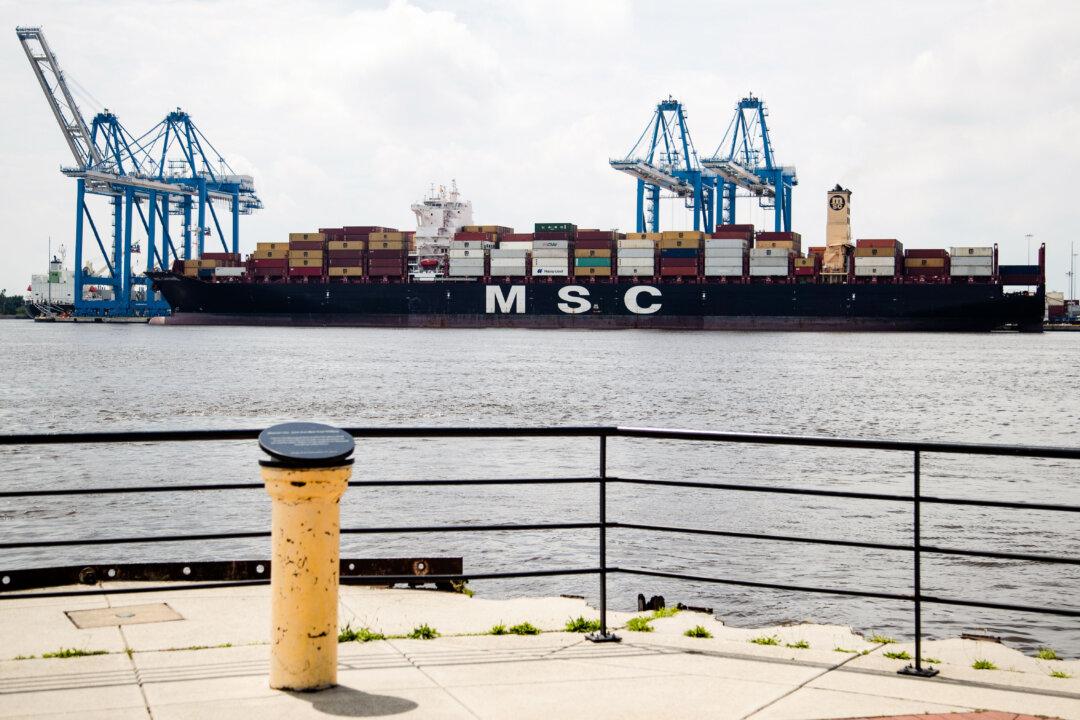Vice President JD Vance didn’t have new trade deals to announce, nor did he address trade negotiations or changes to President Donald Trump’s tariff regime during his May 1 tour of Nucor’s steel plant outside Huger in Berkeley County, South Carolina.
Instead, he came to the 62-acre, 30-year-old plant 35 miles north of Charleston to celebrate the Trump administration’s first 100 days, calling it “the beginning of the industrial renaissance in the United States of America.”
“A ‘golden age of American manufacturing’ started 100 days ago, and we’re building it right here at Nucor Steel in South Carolina,” Vance said after touring the plant, which employs 1,000 workers and 350 contractors.
Vance was accompanied by South Carolina Lt. Gov. Pamela Evette, Rep. Nancy Mace (R-S.C.), and Environmental Protection Agency Administrator Lee Zeldin.
Zeldin said federal agencies “should be doing nothing but helping American manufacturing,” not building regulatory roadblocks.
“We believe we can both protect the environment and grow the economy. We choose both,” Zeldin said.
He noted the EPA in March initiated “the largest deregulatory action in the history of the United States of America” to boost energy development and foster a domestic “manufacturing renaissance.”
Those early moves—including 25-percent tariffs on steel and aluminum—are important for domestic heavy industry, Nucor CEO Leon Topalian said.
Under the new administration’s policies, “Nucor will continue to invest and grow this company … ensuring our nation has the strongest and most diverse steel and steel products available anywhere in the world,” he said.
The tariffs are authorized under Section 232 of the Trade Expansion Act of 1962, which gives the president the capacity to adjust imports to “protect national security.”
While President Joe Biden lifted Trump’s steel and aluminum tariffs on certain countries, such as Japan and the United Kingdom, he retained most and expanded those against steelmakers in China.
Vance dismissed criticism of the president’s tariffs and trade policies from people he said “ought to know better.”
The president’s policies “do a very simple thing—rebalance trade in favor of American workers and American businesses, instead of foreign workers and foreign corporations.”

State of Domestic Steel
According to the U.S. Geological Survey, America’s iron and steel industry produced 81 million tons of “raw steel” in 2024 with an estimated value of $120 billion, a 10 percent decrease from $132 billion produced in 2023.U.S. steel production ranks fourth globally behind China, India, and Japan.
Its data show 2024 steel imports from 79 nations. U.S. buyers purchased $7.7 billion in steel from Canada, followed by Brazil ($4.5 billion), Mexico ($3.3 billion), and South Korea ($1.9 billion).
This trend must end, Vance said, calling the Nucor tour a “meaningful stop” for him because his grandfather, “the man who raised me,” worked 40 years as a welder at Armco Steel in Middletown, Ohio.
Yet, he said, “I’ve actually never had a tour of a steel mill” until viewing Nucor’s plant, where the control room is “like a spaceship.”
“I felt like Homer Simpson,” Vance said.
“What it made me realize is this technology … We use this term [and] we think about it as iPhones in our pockets ... But technology is happening right here at a steelmaking facility in Newport, in Berkeley, in South Carolina. That is the technology of the future.”
He then refuted claims that Trump “wants to bring back the jobs of the past.”
“I don’t think anything could be further from the truth. I don’t see the steel mill jobs in the past,” he said.
“I see the steel mill jobs in the future. I see technology allowing us to do something today that my grandfather, God love him, wasn’t doing 40 years ago at Armco Steel in Middletown, Ohio.”
Nucor, Cleveland-Cliffs, Carpenter Technology, Commercial Metals Company, Steel Dynamics, and U.S. Steel are the largest American steel producers.
Nucor, based in Charlotte, North Carolina, was established in 1897. It is North America’s largest steelmaker and recycler.
“Every year, Nucor produces about 25 percent of the steel consumed in the United States at our 26 steel mills,” Topalian said.
Vance did not address what Trump may decide regarding the purchase of U.S. Steel by Japan-based Nippon Steel.
Before leaving office in January, Biden issued an order prohibiting the $14.1 billion acquisition. Trump also opposes the sale.
Supporters, which include local United Mine Workers unions in the Pittsburgh area, say the deal would elevate U.S. Steel from being the world’s 16th largest steelmaker to being part of the globe’s third-largest steel producer.
Nippon Steel and U.S. Steel have filed a lawsuit challenging Biden’s decision.
By mid-to-late May, the committee will provide “a recommendation … describing whether any measures proposed by the parties are sufficient to mitigate any national security risks.”
